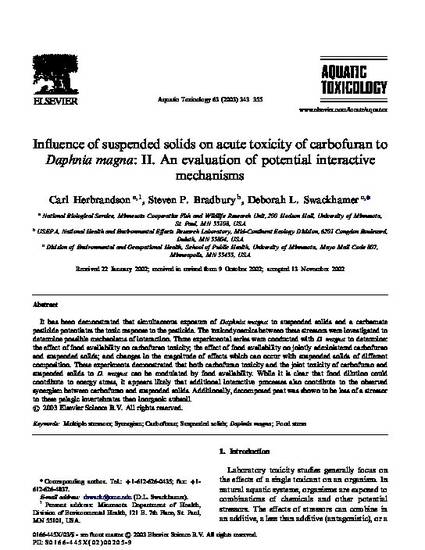
It has been demonstrated that simultaneous exposure of Daphnia magna to suspended solids and a carbamate pesticide potentiates the toxic response to the pesticide. The toxicodynamics between these stressors were investigated to determine possible mechanisms of interaction. Three experimental series were conducted with D. magna to determine: the effect of food availability on carbofuran toxicity; the effect of food availability on jointly administered carbofuran and suspended solids; and changes in the magnitude of effects which can occur with suspended solids of different composition. These experiments demonstrated that both carbofuran toxicity and the joint toxicity of carbofuran and suspended solids to D. magna can be modulated by food availability. While it is clear that food dilution could contribute to energy stress, it appears likely that additional interactive processes also contribute to the observed synergism between carbofuran and suspended solids. Additionally, decomposed peat was shown to be less of a stressor to these pelagic invertebrates than inorganic subsoil.
- Multiple stressors,
- Synergism,
- Carbofuran,
- Suspended solids,
- Daphnia magna,
- Food stress
Available at: http://works.bepress.com/steven_bradbury/12/
